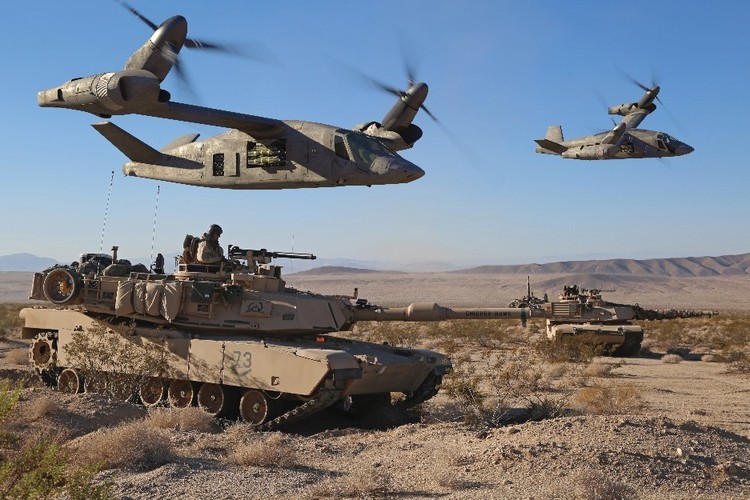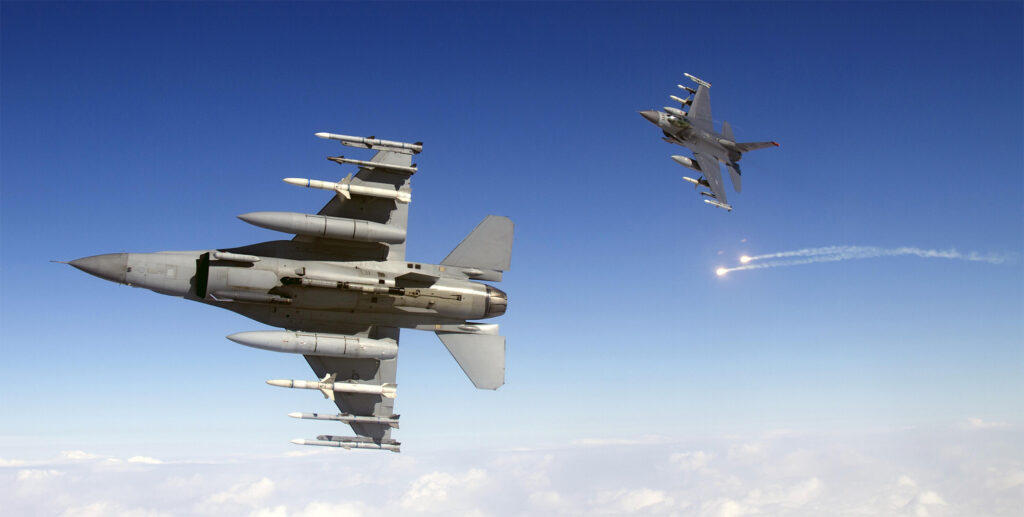On December 5, the Army announced that Bell’s V-280 Valor won the Future Long-Range Assault Aircraft (FLRAA) competition aimed at fielding a modern replacement for the legendary UH-60 Black Hawk helicopter. The contract award, potentially worth as much as $1.2 billion, will fund ongoing development of the platform heading toward a production contract worth tens of billions of dollars.
The V-280 Valor is designed to serve as a medium-lift infantry utility platform that will offer a huge leap in capability over the Black Hawk in several important areas. With a top speed of 305 knots (approximately 350 miles per hour), the Valor can best the Black Hawk in a race by more than 100 miles per hour while offering a combat range of around 900 miles, almost three times that of the UH-60. And believe it or not, it promises to do all that while carrying as much as 25% more weight on board.
The Army is the world’s largest operator of H-60 helicopters, with more than 2,100 platforms in active service, making its FLRAA procurement decision a monumental one regardless of winner. However, since the V-280’s victory was announced, we’ve been inundated with commenters asking questions about whether the V-280’s tilt-rotor design could prove to be more trouble than it’s worth. At the top of this list are concerns about the safety record of the Valor’s tilt-rotor predecessor, the V-22 Osprey, and observations about the Valor’s wider footprint than the Black Hawk it will replace.
Many of the specific requirements the Army laid out for the FLRAA program, as well as the reasons behind the Army’s decision, remain classified, making it quite a bit tougher to address the questions posed by our audience. However, we have been able to put together some reasonable answers to these looming questions based on official statements and a great deal of research.
How is the V-280 Valor different from Bell’s V-22 Osprey?
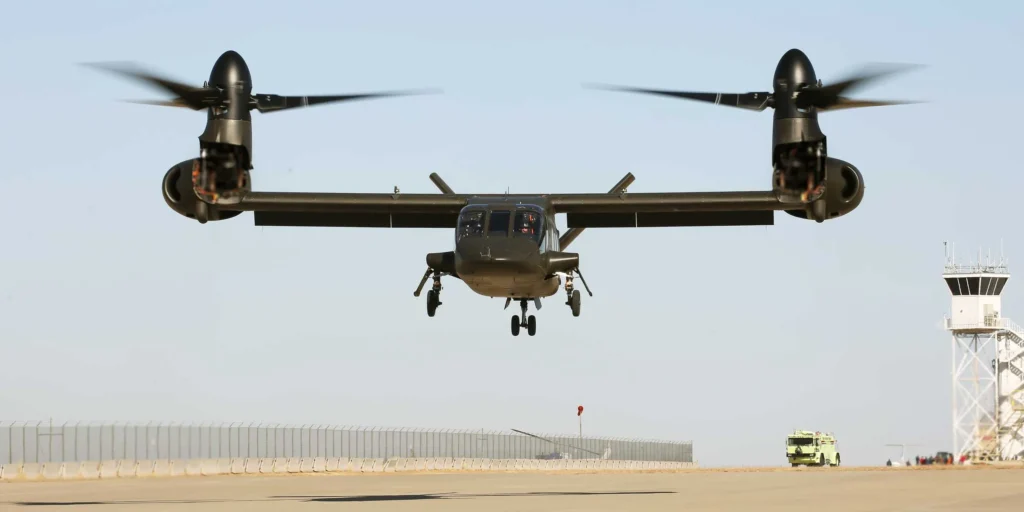
Bell’s V-280 Valor’s tilt-rotor design is a significant departure from the Black Hawk’s conventional helicopter layout and is more in keeping with Bell’s own V-22 Osprey. But while these two platforms leverage the same basic approach to aviation, there are a number of important differences.
A tilt-rotor aircraft is, at its most simplistic level, a combination of helicopter and airplane design elements meant to give operators the basic utility of a rotorcraft alongside the greater speeds and ranges allowed by fixed-wing aircraft. This is accomplished via powered rotors mounted on rotating nacelles at either end of a fixed wing, with the props pointing up for vertical take-off and landing operations, and forward during sustained flight.
The most apparent difference between the V-280 Valor and V-22 Osprey is in size. The V-280 was designed from the start to support infantry operations, whereas the V-22 is considered a medium/heavy assault support and utility aircraft. In practical terms, that means the V-22 is quite a bit bigger — it’s capable of carrying as many as 24 troops, while the V-280 is limited to just 12.
That difference in purpose also manifests in the doors used in each aircraft. The V-22 leverages a large rear cargo ramp, while the V-280 has sliding six-foot doors on either side, more in keeping with the existing Black Hawk.
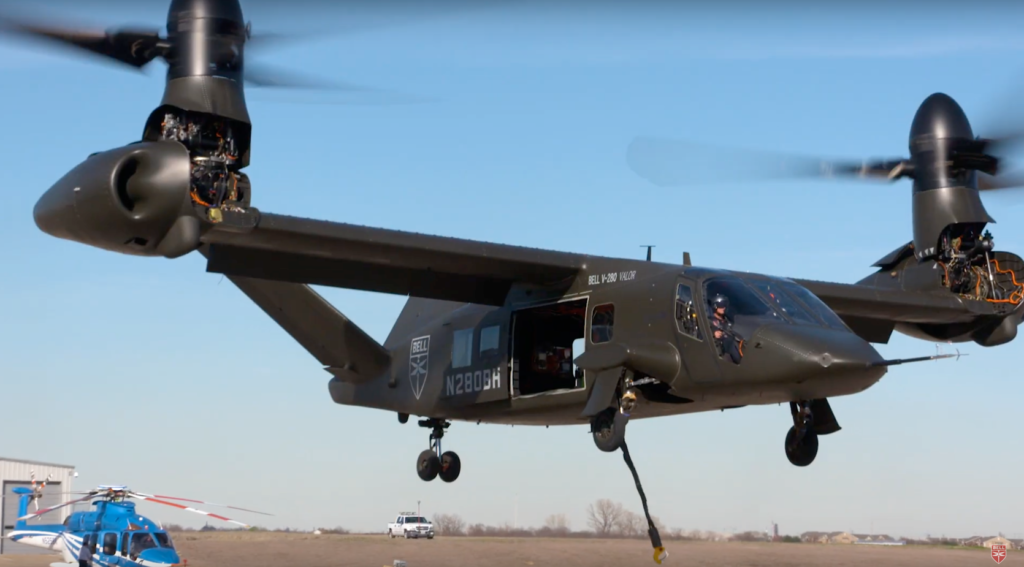
Perhaps the most important difference between these platforms in terms of operation, however, isn’t quite as conspicuous. Unlike the V-22, the V-280’s engines don’t actually rotate at the ends of its wings. Instead, the engines remain in place while the rotors and drive shafts tilt.
“Our fixed engine configuration allows maintainers the ability to remove an engine, drive shaft or gearbox independent of each other, reducing time required for maintenance procedures, and increasing aircraft availability to the operator,” Keith Flail, Bell’s Vice President of Advanced Tiltrotor Systems, told Tyler Rogoway in an interview for The Warzone.
The V-22 Osprey and tilt-rotor aircraft’s reputation for being unsafe
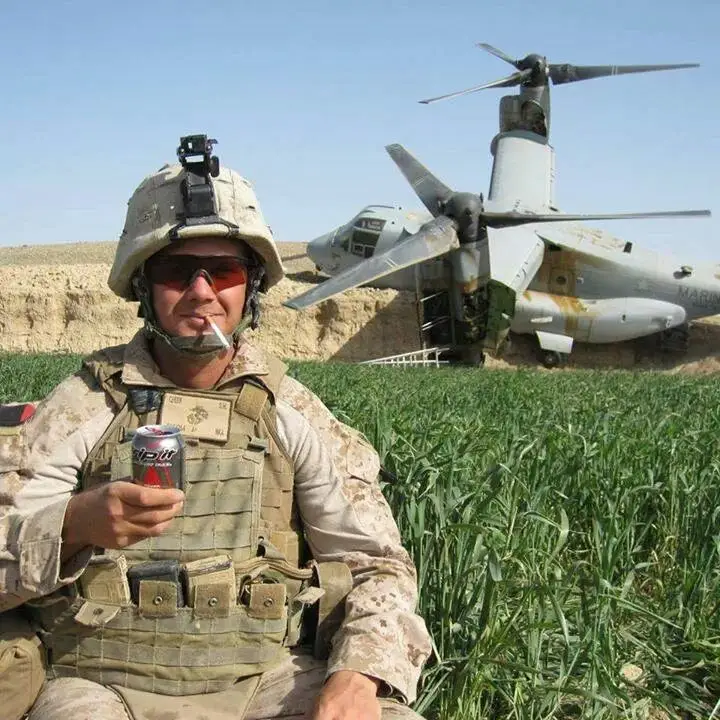
The most prominent concern flooding the comments sections beneath stories and videos about the Army’s V-280 decision really boils down to the tilt-rotor V-22 Osprey’s reputation as an unsafe platform. The V-22 program has certainly seen several high-profile incidents, leading to the deaths of service members, dating all the way back to the early 1990s.
The first fatalities associated with the Osprey were in July of 1992 when seven Marines were killed. Eight years later, another Osprey full of Marines went down, killing 19. In all, 51 service members have died in Osprey crashes throughout the program’s lifetime, with the most recent coming in June of this year when an Osprey belonging to the Marine’s 3rd Marine Aircraft Wing crashed in California, killing five.
Every service member lost in training or combat is a tragedy, but in order to determine whether the V-280 is truly an unsafe replacement for the UH-60, it’s important to view these tragic incidents through an admittedly difficult-to-muster lens of objectivity.
Fatalities are an unfortunate fact of life in military aviation regardless of platform, and while there’s a valid argument to be made that many of these deaths could have been avoided through better training or maintenance practices, the Osprey certainly isn’t alone in its stomach-churning body count.
Between 2013 and December 2020, 224 service members died in over 6,000 separate DoD aviation accidents that destroyed 186 aircraft and caused around $10 billion worth of damage.
And despite the Osprey’s negative reputation, you won’t find its incident record as a dangerous outlier in service-wide or branch-specific data. As Marine Maj. Jorge Hernandez, spokesman for Marine aviation, explained to the Military Times in a July e-mail, the Marine Corps’ MV-22 Osprey has a lower mishap rate per 100,000 flight hours than the Harrier, Super Hornet, F-35B, or CH-53E Super Stallion.
“The 10-year average mishap rate for MV-22′s is 3.16 per 100,000 flight hours,” Hernandez wrote on July 8.
In the first 33 years, the H-60 Black Hawk flew, more than 180 American service members and civilians died in non-combat-related crashes, according to the list tallied by ArmyAirCrews.com. Now, it’s important to keep in mind that the Black Hawk existed in higher volume than the Osprey during this time, and data about the UH-60’s mishap rate per 100,000 flight hours that early in its lifespan is extremely sparse. One thing is certain, however: The Black Hawk, like most programs, had its own series of early setbacks.
(UPI.com)
In April of 1985, six years after entering service, the Army’s fleet of some 630 UH-60s was grounded pending investigations into 37 deaths across 23 incidents. Three years later, that fleet had grown to 970, but an additional eight incidents brought the death toll up to 65. To be clear, it seems likely that the Black Hawk may have still had a better mishap rate than the Osprey during this time — as the Army pointed out in March of 1988, it remained the “safest helicopter the Army had ever flown” despite these fatalities. Helicopter technology at this point was, to be fair, quite a bit more mature than tilt-rotor platforms were when the Osprey entered service.
This isn’t to suggest that the Osprey is safer than the Black Hawk, but rather just that these sorts of tragedies are, to some extent, inherent to the danger of military aviation.
There are, however, a few factors that play into the Osprey’s perception as unsafe. The first may be recency bias, as the V-22 only entered service in 2007, compared to the decade-spanning careers of its peers. Aircraft, like people, often only get one chance at a first impression, and the Osprey’s early crashes certainly left their mark.
The second tragic variable to consider is the Osprey’s utilitarian role as the Marine Corps’ workhorse troop transport. When a fighter jet crashes, you might see one or two fatalities, but when an aircraft carrying two dozen Marines goes down, the death toll can be much higher. As a result, the Marine Corps’ Hornets and Super Hornets may go down at more than twice the rate of the Osprey, but produce fewer fatalities.
Class-A mishap rates per 100,000 flight hours as of September 2017, published by Breaking Defense.
In short, the tilt-rotor Osprey has seen some tragic incidents in its service life, but it’s certainly not the systemically unsafe platform many seem to believe.
Will the V-280 Valor’s wider footprint negatively affect combat ops?
The V-280 Valor is undoubtedly larger than the Black Hawk it will replace, with a wingspan of nearly 82 feet compared to the H-60’s slim waistline of just 6’9”. The Valor is quite a bit shorter, however, measuring in at 50.5 feet compared to the
Black Hawk’s nearly 65 feet.
When you compare them in that way, the Valor seems much larger than the Black Hawk, but if you turn the Valor 90 degrees, the size disparity becomes less pronounced.
(Bell image modified by Alex Hollings)
The Valor’s wide footprint will potentially limit its ability to land in tight spaces, something many have voiced concerns about, but Bell believes that the benefits of the tilt-rotor design outweigh any potential limitations.
“The V-280 has a slightly larger footprint than the UH-60. However, you get speeds and ranges to fight against near-peer threats with unprecedented operational productivity. You can’t win the fight unless you’re in the fight,” Flail said.
As an example of footprint, Flail points out that you may only be able to fit 10 V-280 Valors in a soccer field, whereas you might have been able to squeeze 12 Black Hawks instead…
“But you could execute missions with twice the speed and twice the range.”
That speed and range could certainly come into play if the United States finds itself in a Pacific conflict — something Bell was acutely aware of when preparing this graphic that compares the V-280 Valor’s range to that of the UH-60.
(Bell)
And while the Valor may need to choose its landing spots more carefully, that added speed and range promise to save lives in medevac operations. Speed is so valuable because of what’s known within the medical community as the “golden hour.” If you can get a wounded Soldier to advanced medical care within the first hour after they get hurt, their likelihood of survival increases dramatically. The Valor’s ability to travel at double the Black Hawk’s speed and at twice its range can pay real dividends in terms of troop survival, Bell contends.
Is the V-280 Valor the right choice for the US Army? Bell render of the V-280 Valor in service.
To be clear, it’s impossible at this early stage of the V-280 Valor’s life to say that it’s perfectly suited for the Army’s needs. In fact, at this point, we can’t even say for sure what the Army thinks its specific needs are. When asked for more specifics about what prompted the Army to choose the Valor over Sikorski and Boeing’s Defiant X, Maj. Gen. Robert Barrie, the Army’s program executive officer for aviation, offered what basically amounts to a verbose wink and a shrug.
“Can we be more specific on the factors of how exactly we arrived at this point? No,” Barrie said. “However, best value is meant in the truest sense that it was a comprehensive analysis of a variety of factors. No one really drove that decision. So, if you look broadly at a very high level, the factors are variables and performance, cost, and schedule, all were considered, and the combination of those are defined explicitly and evaluated… That is what I would describe as the best value [and] what the Army would describe as its best value selection.”
(Bell)
What we can say for sure is that the V-280 Valor benefits from hundreds of thousands of flight hours worth of experience derived from the V-22 Osprey, and the prototype that’s been used for testing has already exceeded expectations. After all, the “280” in its name was meant to represent 280 knots, only for the prototype to cruise all the way up to 305 knots in testing.
That first prototype racked up about 200 hours in the sky between 2017 and when Bell retired it in 2021. Although Boeing’s entry to the Army’s competition—the
Defiant X prototype—is still flying, it has yet to match the Valor’s time in the sky, due in large part to delays related to its rotor blade and transmission system.
The contract awarded to Bell is good for $232 million with options that range up to $1.2 billion, but even then, the result won’t be a fleet of new transport platforms; it will be a more thoroughly designed and tested platform that’s ready to move into production. In other words, this program is still very much in its infancy.
Will the V-280 eventually prove its doubters wrong and go on to earn a place atop the legendary Army aircraft podium alongside the likes of the UH-1 Iroquois and UH-60 Black Hawk? The truth is, no one can say just yet. But the Pentagon believes the Valor has what it takes to be the future of Army aviation. The V-280’s combination of speed, range, and utility could offer a massive leap in capability for America’s infantry troops in the 21st century.
But is the Army right? Only time will tell.
Read more from Sandboxx News
- As Russian casualties increase, Moscow is offering big pay to attract new troops
- Russian planes keep getting blown up in airfields hundreds of miles from the fighting, exposing embarrassing gaps in its defenses
- What now, Wagner Group? How will Prigozhin’s death affect Russia?
- Prigozhin believed dead after plane crash in Russia
